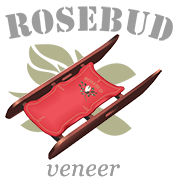The Lasting Appeal of Walnut Wood Veneers
Walnut wood veneer conveys pure elegance and warmth in a restrained color palette. Incorporated into minimalist designs, it adds warmth and a natural feel in a material that will stand up for the lifetime of the structure.
When it comes to matching the grain of wood over large surfaces or across multiple pieces of furniture, there really is no substitute for veneer. Veneer allows builders to stretch matches to the grain of wood across much larger surfaces than would ever be possible with solid wood.Veneer creates a more uniformly decorative surface than is readily available with solid wood. And veneer is affordable when solid wood is not. Solid wood may simply not be available, or may be priced out of reach for most projects.
Rosebud Veneer offers walnut wood veneer as raw wood veneer, custom panels, and 2-ply walnut wood veneer sheets. We can provide edge-banded, cut-to-size, and finished walnut wood panels.Rosebud Veneer has more than three decades of experience working with designers, architects, mill workers, and contractors. Our broad experience enables us to address any challenge in manufacturing or installation. Let us help you take your next high-end custom furniture, cabinet, or architectural project to the next level.
Have questions? Contact us online or call us at (502) 330-5688.
